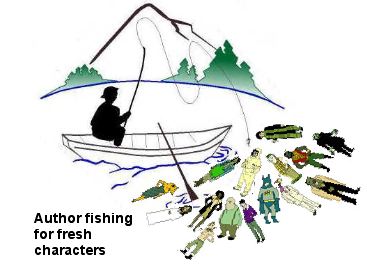1. Creating Characters
| |
(i) SOURCES FOR CHARACTERS |
There’s no easy route to character creation. Learn more about other people and yourself would be good advice, but most of us spend our whole lives trying to do that anyway.
My ideas for characters come from three sources: real people I know; fictional figures in movies or books; and qualities I recognise in myself. Mostly, my characters are amalgams from more than one source—a real person as well as a fictional figure, often more than one real person, more than one fictional figure. And always a bit of myself.
I wish I didn’t have to own up about fictional figures, because it sounds as though I’m just borrowing from other writers and creators. I hope it’s never just borrowing.
Fictional figures are stimulating because they’re so sharp and focused—they help me get a better handle on some real person I know, or something in myself. I get this stimulation from all kinds of fiction, not only books in my own genre of fantasy. Non-fiction too—histories, biographies, documentaries …
 When I say get a better handle, I don’t mean ‘better’ in the sense of more accurate. I mean that it helps me to grasp an interesting potential that could fit with that real person I know. I don’t care whether it’s true to that person or not. I’m writing fiction, not fact. When I say get a better handle, I don’t mean ‘better’ in the sense of more accurate. I mean that it helps me to grasp an interesting potential that could fit with that real person I know. I don’t care whether it’s true to that person or not. I’m writing fiction, not fact.
Sometime, unfortunately, the real person cares if they happen to read what I’ve written! When a friend or acquaintance recognises an aspect of themselves in a character, it’s hard to explain that, no, this isn’t the way I see you, only something I’ve seen as a possibility through you. Probably no explanation will convince—better to lie and deny outright! And change any obvious physical resemblances in the first place.
At the opposite end to fictional figures is one’s own sense of self—just too big and vague and wishy-washy to go readily into a suitable size character for a novel. (I’m thinking genre novels, as always, not semi-autobiographical literature.) A real person or a fictional figure or both can serve to draw off some usable part of yourself, can give it shape and definition.
|





